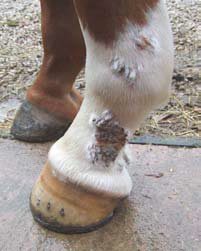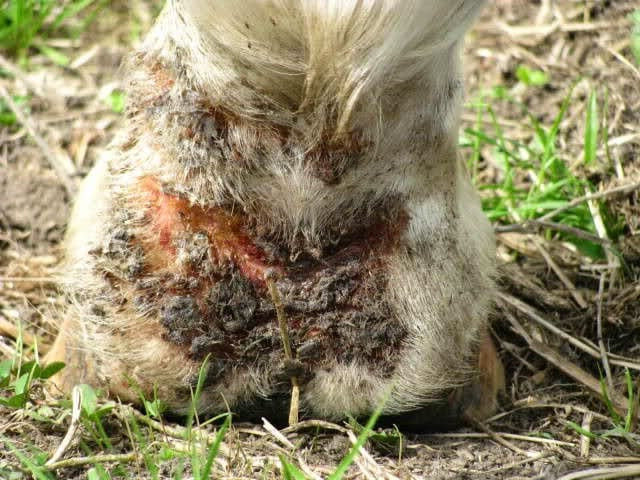Sadly it is that time of year again! As we are out on yards the presence of rugs appearing, covered up greys and squelching can mean only one thing.... mud!
This weeks blog will be focusing on mud fever- with a few tips and tricks for prevention and management!

What is mud fever?
Mud fever, also known as pastern dermatitis is a common skin condition affecting horses often associated with wet and muddy fields. Despite its name, we do see the occasional mud fever at all times of year, even in the height of summer with rock hard ground!
Mud fever is caused after the skin surface is damaged and bacteria enter the skin, causing inflammation and sometimes infection. We will usually see scabs form on the heels, around the pastern or up to the fetlock and lower cannon. Swelling of the lower limb can also occur.
In heavily feathered breeds it can be difficult to identify these lesions and extensive clipping may be required to identify and treat all lesions. As they can also be very painful it may be difficult to examine or remove the scabs and veterinary intervention is often required.

How do you treat mud fever?
- Firstly, a thorough exam of all legs, not just the obviously affected leg is important. Mud fever can start with very small lesions and if left untreated increase in size and number quickly
- Clipping around the lesions is the easiest way to identify the edges and make sure you are treating all of the affected area
- The scabs are often sore to touch, so soaking them with warm water helps to loosen them before they can be removed. The skin underneath can be quite raw and sensitive so a gentle touch is essential!
- Once the scabs are removed the area should be cleaned and the leg dried thoroughly before a suitable barrier cream or similar product is applied
- Stabling your horse or pony is often required until all lesions have healed, the areas need to be kept clean and dry which isn't likely in a wet field!
- Veterinary intervention may be required, often the leg can be quite painful and removal of scabs impossible without sedation. In some cases antibiotics and anti-inflammatory medications may be prescribed.
How do I prevent mud fever?
- Anyone who has had a horse with mud fever knows how difficult it is to prevent and manage, particularly at this time of year when we're practically swimming our way out to the fields!
- Making sure legs are thoroughly dried when bringing your horse or pony in is extremely important, this will also help you catch any early lesions
- Keeping bedding clean and dry also helps
- Excessive washing or aggressive washing can cause breaks in the skin and particularly if the legs are not dried properly lead to mud fever
- Skin trauma, such as rubbing from an overreach boot or misplaced bandages can cause abrasions in the skin allowing bacteria to enter
- Using waterproof leg wraps may be beneficial
- Rotate paddocks to avoid the swamp effect!

If your horse or pony has mud fever and you would like some advice or if you have any questions just give us a ring on 07747 771182.
Alex xx

